Christian History
Women of the Revolutionary War

Christian History “My people are destroyed for lack of knowledge.” Hosea 4:6 |

|

Courageous women have always played a vital role in American history. Addressing the Daughters of the American Revolution, April 19, 1926, President Calvin Coolidge stated: “The importance of women in the working out the destiny of mankind … As there were fathers in our Republic so there were mothers … By their abiding faith they inspired and encouraged the men; by their sacrifice they performed their part in the struggle out of which came our country …”
Women followed the American army to Valley Forge, enduring the freezing 1777. Over 2,500 soldiers perished from hunger, typhoid, jaundice, dysentery, and pneumonia, but also an estimated 500 women died there. Coolidge continued: “We have been told of the unselfish devotion of the women who gave their own warm garments to fashion clothing for the suffering Continental Army during that bitter winter at Valley Forge. The burdens of the war were not all borne by the men.”
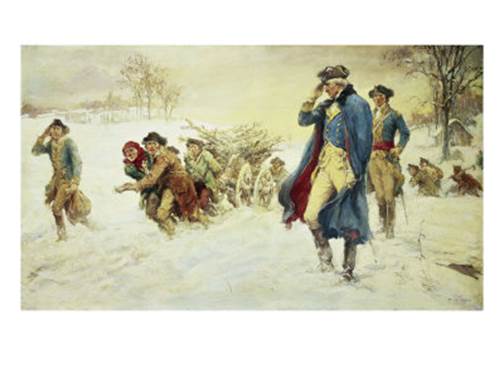
The women scavenged for supplies, cooked food, washed clothes, formed sewing circles to knit and mended ragged uniforms and blankets, and cared for sick and dying soldiers. Martha Washington was one of the women following the army. Mrs. Westlake described Martha: “I never in my life knew a woman so busy from early morning until late at night as was Lady Washington, providing comforts for the sick soldiers.”
Esther DeBerdt Reed, wife of officer Joseph Reed, and Sarah Franklin Bache, daughter of Benjamin Franklin, organized “The Ladies of Philadelphia” and raised $300,000 for General Washington to buy warm clothes for American troops.
During the Revolution, many, like Lucy Knox, left their Loyalist British families who sailed for England, never to see them again, in order to join their patriotic American husbands on military assignments in shifting encampments. Lucy and Colonel Henry Knox did not have a permanent home till they were married 20 years.

At the Battle of Monmouth, June 28, 1778, Molly Pitcher was bringing water to soldiers, while her husband manned one of the cannons. When her husband collapsed from heat stroke, Molly took his place swabbing and loading the cannon for the rest of the battle. A British cannonball flew between her legs, tearing off part of her skirt. Molly straightened up and uttered, “Well, that could have been worse,” and resumed loading the cannon.
Soldier Joseph Plumb Martin described: “A woman whose husband belonged to the artillery and who was then attached to a piece in the engagement, attended with her husband at the piece the whole time. While in the act of reaching a cartridge… a cannon shot from the enemy passed directly between her legs without doing any other damage than carrying away all the lower part of her petticoat. Looking at it with apparent unconcern, she observed that it was lucky it did not pass a little higher, for in that case it might have carried away something else, and continued her occupation.”
A similar story is that of Margaret Cochran Corbin, wife of artilleryman John Corbin. On November 16, 1776, John Corbin, along with 2,800 Continental soldiers, defended Manhattan’s Fort Washington, which was being attacked by 9,000 Hessian mercenary troops. Margaret Corbin was bringing water to swab the cannon when her husband was killed. She immediately took his place at the cannon, and helped return fire. Seriously wounded in her arm, Margaret Corbin, was the first woman in U.S. history to be awarded a military pension.
When the men of Pepperell, Massachusetts, went off to war, Prudence Cummings Wright and Sarah Shattuck formed their own militia of women to protect the remaining townspeople – “Mrs. David Wright’s Guard.” Their weapons were everything from muskets to farm tools. Women managed homesteads while their husbands fought. They worked the farms, raised families, and defended against Indians stirred up by the British to attack. Women raised money for suffering soldiers, organized resistance protests, boycotted British-made products, which meant going back to using their old spinning wheels. Women also engaged in riskier roles as messengers, scouts, saboteurs, or spies, the punishment for which, if caught, was hanging.
Catherine “Kate” Moore Barry, the “Heroine of the Battle of Cowpens,” rode through the back trails of South Carolina to warn of approaching British troops and round up militia, including her husband, to join General Daniel Morgan for the Battle of Cowpens, January 17, 1781.
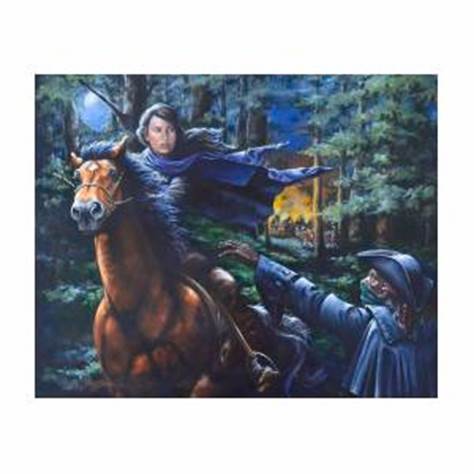
16-year-old Sybil Ludington, on night of April 26, 1777, rode 40 miles through Putnam and Dutchess Counties waking up patriots to join the militia, led by her father, Colonel Henry Ludington. Sybil delivered the urgent warning that the British had burned Danbury, Connecticut, and were fast approaching.
Lydia Darragh, a Quaker, had her home commandeered by British officers for weeks. During their meetings, Lydia would hide in a closet under the stairs and listened through the walls. Hearing their plans, Lydia made notes on small pieces of paper and sewed them into button covers on her son’s coat, instructing him to go to General Washington’s camp at Whitemarsh. Her intelligence saved the Americans from a surprise British attack.
22-year-old Deborah Champion in September 1775, disguised herself as an old woman and risked her life to ride from New London, Connecticut, to Boston, passing several British checkpoints. Deborah was delivering an urgent message from her father, Henry Champion – the Continental Army’s commissary general, to General George Washington, hiding the important papers under the bodice of her linsey-woolsey dress.
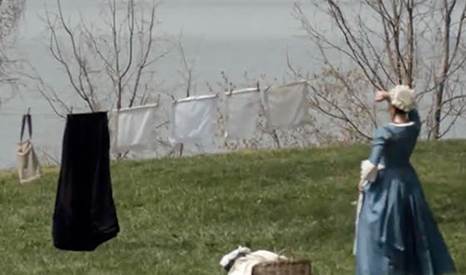
Anna Smith Strong was an integral part of the Culper Spy Ring, which gathered information for General Washington, 1778-1781. Robert Townsend, pretending to be a loyalist, learned of British troops movements around New York and told tavern owner Austin Roe, who got it to Abraham Woodhull. Woodhull was signaled by Anna Smith Strong, when she hung her laundry outside to dry on a clothesline in pre-arranged configurations, that Caleb Brewster was waiting in a cove to take the information across Long Island Sound to Major Ben Tallmadge and General Washington.
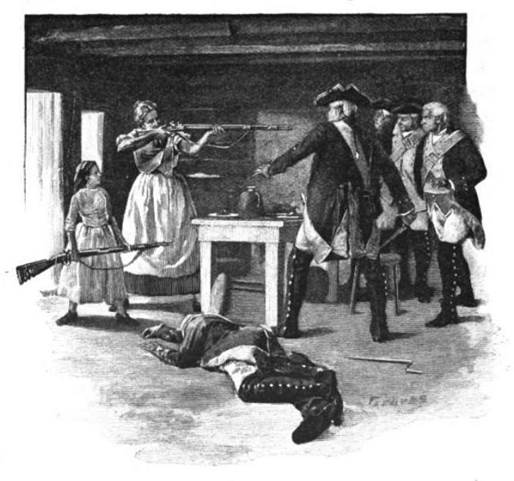
Hot tempered Nancy Hart had her cabin searched by six British soldiers. They shot her prized turkey and ordered her to cook it. While serving the soldiers wine, she discreetly passed their stacked muskets through a crack in the wall to her daughter outside. When the soldiers finally noticed what she was doing, she pointed one of the guns at them saying that she would shoot the first one who moved, which she promptly did. Nancy held the rest at gun point till her husband arrived. She insisted they be hung. In 1912, a railroad construction worker grading land near the old Hart cabin found a neat row of six skeletons!
Deborah Samson (or Sampson) Gannett, after being freed from being an indentured servant on a farm, bound her chest, dressed as a man, and enlisted in the Continental Army under the name Robert Shurtliff. Deborah served three years, being injured several times, but refused medical attention for fear of being found out. It was not until she became deathly ill from fever that the doctor discovered her identity. She was honorably discharged. In 1792, Deborah received back pay, and in 1805, Congress granted her a pension as a war veteran.
Martha Bratton, wife of Colonel William Bratton, blew up a cache of gunpowder to keep it from the British. When questioned, she proclaimed, “It was I who did it!” A British officer held a reaping hook to her throat, demanding she confess where her husband was, but Martha refused to tell. When a battle was taking place right outside her home, Martha extinguished the fire in the fireplace and put her little son up the chimney to keep him from being hit by stray gunfire.
Nancy “Nanyehi” Ward was a Cherokee in eastern Tennessee. Cherokee had sided with the British during the French and Indian War, and again during the Revolution. Nanye’hi learned that the British had incited her tribe to attack a nearby American settlement. She took the risk of freeing American prisoners so they could warn their village, one of whom, Lydia Bean, was expecting to be burned to death the next day.
The Ladies of Havana, Cuba, donated their own gold and jewelry, estimated at several million dollars, and sent it to help General Washington defeat the British at Yorktown. The message that the “Ladies of Havana” sent with their contribution was: “So the American mothers’ sons are not born as slaves.” Washington reportedly threw his hat in the air when he heard news of their gift.General Jean Baptiste de Rochambeau wrote in his “Daily Memoirs” (Library of Congress): “The joy was enormous when it was received, the money from Havana: The contribution of 800,000 silver pounds which helped stop the financial bankruptcy (of the Revolutionary Army) and raised up the moral spirit of the Army that had begun to dissolve.”
Abigail Adams wrote to her husband, John, from their home in Braintree, Massachusetts, October 16, 1774, regarding increased tensions with Great Britain: “I dare not express to you, at three hundred miles distance, how ardently I long for your return … And whether the end will be tragical, Heaven only knows. You cannot be, I know, nor do I wish to see you, an inactive spectator; but if the sword be drawn, I bid adieu to all domestic felicity, and look forward to that country where there are neither wars nor rumors of war, in a firm belief that through the mercy of its King we shall both rejoice there together … Your most affectionate, Abigail Adams.”
In a letter dated June 25, 1775, Abigail Adams wrote again to her husband regarding the battle at Charlestown, Massachusetts: “We live in continual Expectation of Hostilities. Scarcely a day that does not produce some, but like Good Nehemiah having made our prayer with God, and set the people with their Swords, their Spears and their bows we will say unto them, Be not afraid of them. Remember the Lord who is great and terrible, and fight for your Brethren, your sons and your daughters, your wives and your houses … The British delight on molesting us on the Sabbath. Two Sabbaths we have been in such Alarms that we have had no meetings. This day we have set under our own vine in quietness, have heard Mr. Taft, from Psalms. The Lord is good to all and his tender mercies are over all his works.”
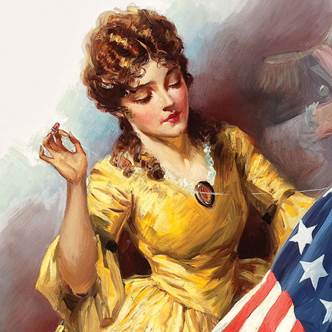
Betsy Ross, born in 1752, to a Quaker family in Philadelphia. Betsy was the 8th of 17 children. Betsy apprenticed as a seamstress and fell in love with upholsterer John Ross, son of an Episcopal rector at Christ Church and nephew of Declaration signer, George Ross. George Ross, the son of an Anglican clergyman, was a delegate from Pennsylvania to the Constitutional Convention, being elected its first vice-president. George Ross was a colonel in the Continental Army and later an admiralty judge in Pennsylvania where he refused to acknowledge the authority of the Federal court over State decisions.
John and Betsy eloped, as Quakers forbade interdenominational marriage. They were married by the last colonial Governor of New Jersey, William Franklin, the son of Ben Franklin. John and Betsy Ross attended Christ’s Church with: George Washington, Alexander Hamilton, Thomas Jefferson, and Benjamin Franklin. The Ross’ pew, number 12, was next to a column adjoining George Washington’s pew number 56 and not far from Ben Franklin’s pew number 70.
During the Revolution, John Ross died when a munitions depot he was guarding blew up. Shortly after, in June 1776, General Washington reportedly asked Betsy Ross to sew an American Flag. With the Continental Congress meeting in Pennsylvania, Betsy Ross also made a flag for the Pennsylvania navy ensign, which had 7 red stripes and 6 white stripes, as well as a commissioning pennant with 13 red-and-white stripes. Betsy Ross and her family continued to make U.S. flags for 50 years.
A widow, Betsy Ross married sea captain Joseph Ashburn at the Old Swedes Church in 1777. That winter the British forcibly quartered in the home of Betsy and Joseph Ashburn. Joseph Ashburn later sailed to the West Indies for war supplies, but was captured and sent to Old Mill Prison, where he died in 1782. Fellow prisoner John Claypoole later brought the news of Joseph’s death to Betsy, only to fall in love with her himself. Betsy married John Claypoole at Christ Church, May 8, 1783, and together they had 5 children.
Voicing the sentiment of the courageous, patriotic women of the Revolution, Abigail Adams wrote to her husband, September 16, 1775: “And unto Him who mounts the whirlwind and directs the storm, I will cheerfully leave the ordering of my lot and whether adverse or prosperous days should be my future portion, I will trust in His right Hand to lead me safely through, and after a short rotation of events, fix me in a state immutable and happy … Adieu! I need not say how sincerely I am your affectionate, Abigail Adams.”
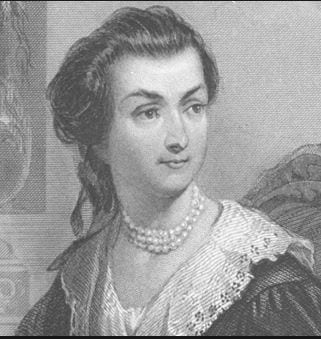
“Her husband is well known at the city gates, where he sits with the other civic leaders… When she speaks, her words are wise, and she gives instructions with kindness. She carefully watches everything in her household and suffers nothing from laziness… There are many virtuous and capable women in the world, but you surpass them all!… A woman who fears the Lord will be greatly praised… Let her deeds publicly declare her praise.”
(Prov. 31:23-31)
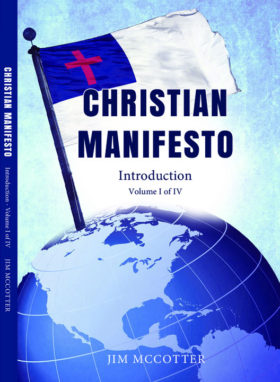
Related to this subject get Jim’s book Christian Manifesto (Vol. 1) at: www.JimsBookstore.com
[This blog is free to share if forwarded in its entirety.]